Es difícil abrir un costurero y no encontrar un acerico. Esas almohadillas llenas de guata para pinchar tanto agujas como alfileres tienen una larga historia.
El nombre de acerico deriva del diminutivo de “hazero” o almohada, aunque otras fuentes lo derivan del diminutivo de “acero”, metal con el que históricamente se han forjado los alfileres.
An English translation below if you click ” Sigue leyendo”
Los primeros alfileteros se remontan a la Edad Media. Los alfileres entonces eran caros, un lujo metálico a disposición de pocos sastres y nobles, por lo que se guardaban en finas y labradas cajitas. Fue a partir del siglo XVIII cuando se empezaron a usar pequeños cojines para pincharlos y almacenarlos. Se hacían con ricas telas, terciopelos y brocados, e iban montados en figuras decorativas de plata. Los formas de zapato fueron las más comunes años después. En la mayoría de los casos eran más un adorno que un útil de costura.
El uso de los acericos se normaliza sólo a partir del siglo XIX, volviéndose algo de común uso y en muchos casos de confección casera. En esta época se ponen de moda también los alfileteros en forma de muñeca de porcelana, que por su fragilidad eran meramente decorativos y de los que hoy en nuestros días se conservan fantásticas colecciones.
La forma de acerico más popular que ha llegado hasta nuestros días desde la época victoriana, es el tomate con una fresa colgando. Según la tradición popular, la colocación de un tomate en la repisa de una nueva casa traía prosperidad y limpiaba los malos espíritus. Si los tomates estaban fuera de temporada, las familias confeccionaban con tejido rojo una bola llena de arena o serrín con adornos verdes como amuleto, que con el tiempo se convirtieron en alfileteros. Entonces el tomate se rellenaba con lana de mecha para evitar la oxidación del acero y la fresa estaba llena de un abrasivo ( arena normalmente) para limpiar y afinar los alfileres.
Todavía recuerdo de mi infancia las visitas a casa de mi tía Luisa que era modista. Cosía en una habitación con un gran ventanal de la parte trasera. Cuando preparaba la labor llevaba en el pecho izquierdo una bolsita de tejido marrón enganchada con un imperdible que ella misma se había confeccionado y donde tenía los alfileres. Yo siempre imaginaba los pinchazos que se llevaría al meter la mano. Quizás por eso, cuando años después empecé a coser, en mi costurero nunca faltó un acerico tipo almohadón o de muñeca, muy práctico sobre todo durante las pruebas de las prendas, ya que te deja las manos libres y los alfileres a mano para cualquier corrección.
De todos, siempre he preferido los acericos chinos, con sus alegres colores y sus coletas de hilo. En su origen tenían 12 muñecos representando los signos del zodiaco. Hoy en día la cantidad de muñecos depende de su tamaño. Me traen grandes recuerdos de mis inicios en el mundo de la costura y del pequeño taller que mi madre me permitió montar en una habitación de casa cuando yo aún era estudiante. Madre mía, de eso hace ya mucho tiempo….
It is difficult to open a sewing kit, and not to find a pincushion. These pads filled with wadding to carry needles and pins have a long history.
We can find the first pincushions in the Middle Ages. The pins were really expensive, a luxury only available for a few tailors and nobles, so they kept them in fine and carved boxes. It was on the eighteenth century when began the use of small cushions to store them. They were made with rich fabrics, velvets and brocades, and rode in decorative silver figures. The shoe shapes were the most common. In most of the cases they were used as an house ornament.
The regular use of pincushions start only from the nineteenth century, becoming something common and often home-made. At that time pincushions shaped as porcelain dolls were in fashion, but their fragility made them merely decorative. Today fantastic collections are preserved.
The most popular shape of pincushion that has survived to this day since Victorian times is a tomato with a hanging strawberry. According to popular tradition, placing a tomato on the mantel of a new house brought prosperity and repelled evil spirits. If the tomatoes were out of season, families prepared with red cloths a ball filled with sand or sawdust with green ornaments as amulet, which eventually became pincushions. The tomato was filled with wool roving to prevent rust, and the strawberry with an abrasive (sand usually) to clean and sharpen the pins.
One of my childhood memories are the visits to my aunty who was a dressmaker. She sewed in a living room with a large window in the back of her house. When she was preparing the work, she carried in his left breast a bag of brown fabric attached with a safety pin made by herself and full of pins. I always imagined many punctures in her hand when taking them. Maybe that’s why in my sewing kit I never missed a pincushion when years later I started sewing, a pillow type or a wrist one, very practical especially during the fitting, as it leaves your hands free and easy for any correction .
I always preferred the Chinese pincushion, with their bright colors and yarn pigtails. Originally they had 12 dolls representing the zodiac signs. Today, quantity depends on its size. They bring me great memories of my early days in the world of fashion in my small workshop that my mother allowed me to ride in a room of the house when I was still a student, so many years ago ….
Images: commons. wikimedia, craftsy, item.rakuten, rubylane

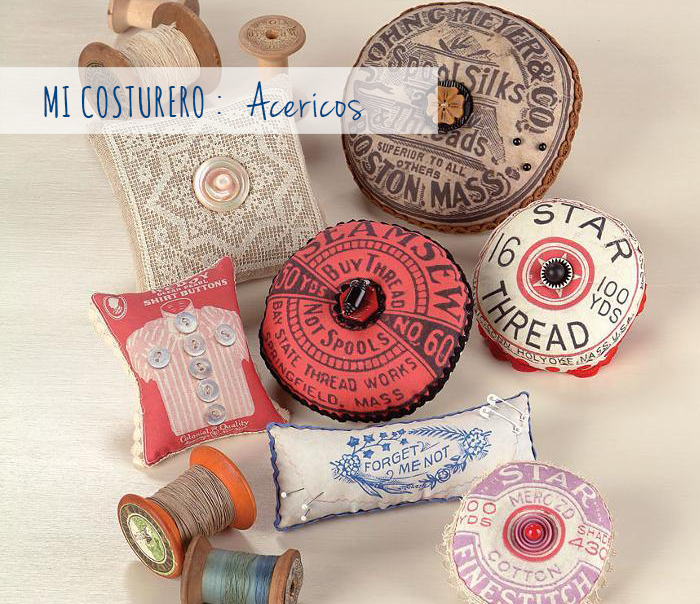
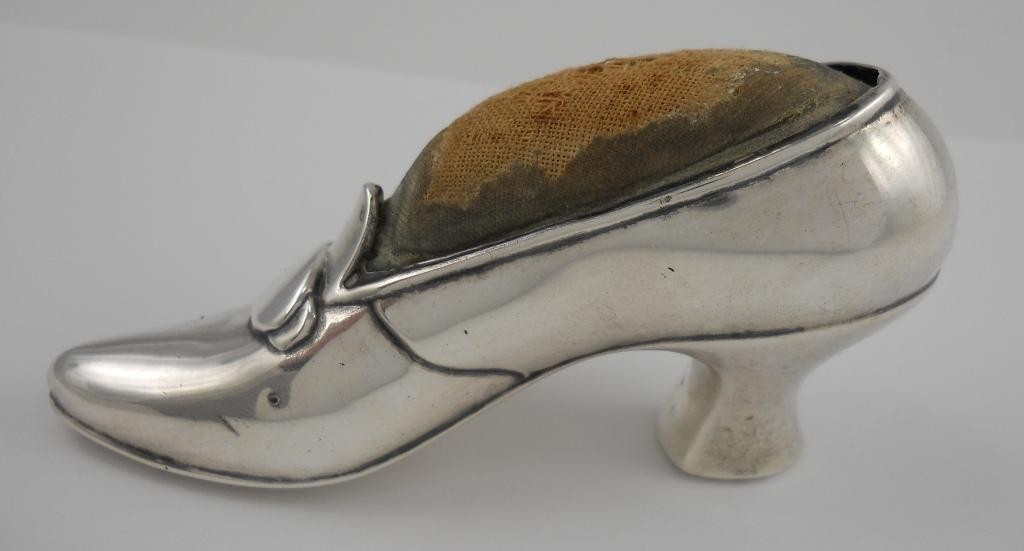
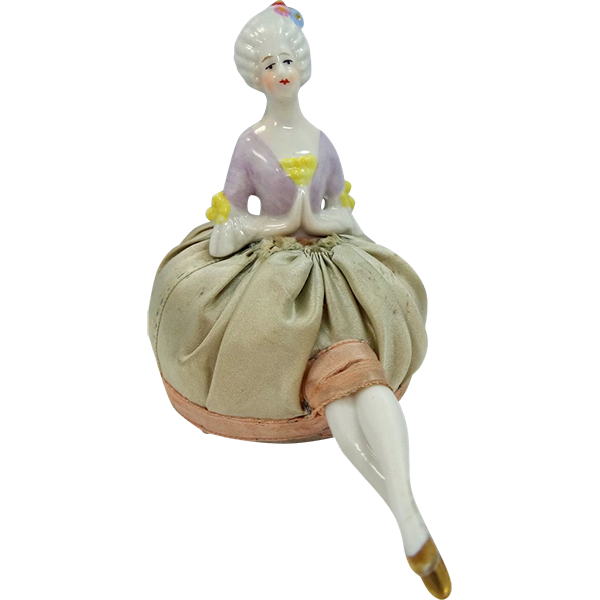
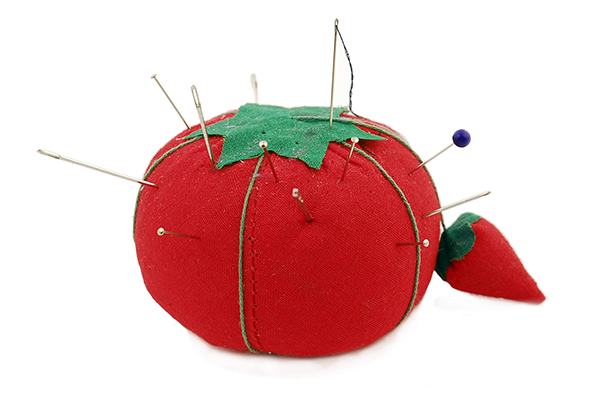
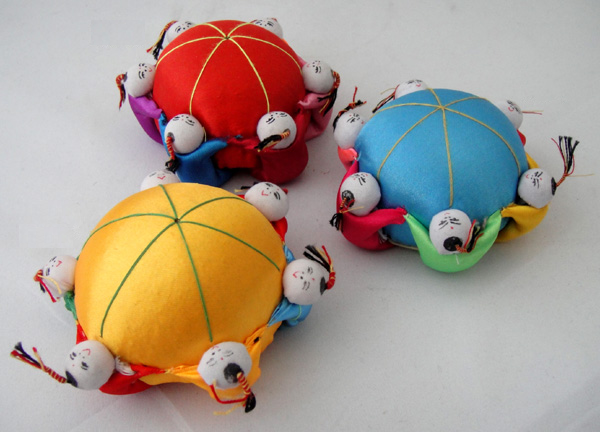
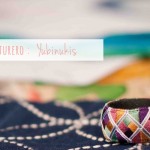
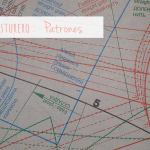
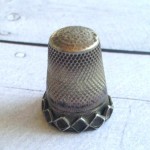
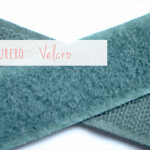




Sweet blog! I found it while searching on Yahoo News.
Do you have any suggestions on how to get listed in Yahoo News?
I’ve been trying for a while but I never seem to get there!
Appreciate it
I didn’t know you can find me through Yahoo News….can you give the link to see it?
Thanks a bunch for sharing this with all folks you really understand what you’re speaking about! Bookmarked. Please also talk over with my web site =). We may have a link change arrangement between us!
I think this is one of the most important info for me. And i’m glad reading your article. But should remark on few general things, The website style is great, the articles is really excellent : D. Good job, cheers